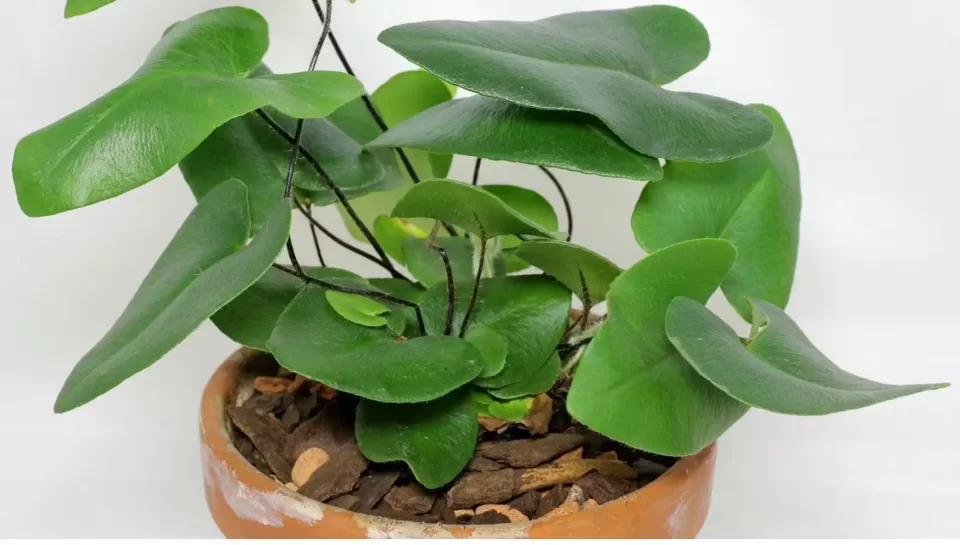Hemionitis Arifolia, commonly known as the Heartleaf Fern, stands out as a mesmerizing fern species celebrated for its unique heart-shaped leaves and graceful demeanor. This tropical beauty belongs to the Pteridaceae family and hails from regions like Asia, Africa, and the Americas.

In this article, we will delve into the fascinating world of Hemionitis arifolia, exploring its origins, characteristics, care requirements, and cultivation tips.
Origins and Habitat:
Native to the tropical and subtropical regions of Asia, Africa, and the Americas, Hemionitis arifolia is accustomed to the sheltered environment of the forest floor. Typically found in moist, shaded areas, this fern thrives in the dappled sunlight that filters through the canopy, creating a natural habitat that plant enthusiasts attempt to replicate in their homes.
Characteristics of Hemionitis Arifolia:
- Heart-Shaped Leaves: One of the most distinctive features of Hemionitis arifolia is its heart-shaped leaves, which have earned it the common name “Heartleaf Fern.” The charming, leathery fronds emerge on delicate, dark stems, adding an enchanting touch to any plant collection.
- Size and Growth Habit: Hemionitis arifolia is a compact fern, making it an excellent choice for both indoor and outdoor cultivation. Typically reaching a height of 8-12 inches, it forms a neat, clumping habit that enhances its ornamental appeal.
- Preferred Growing Conditions:
- Light: Hemionitis arifolia prefers filtered or indirect light, replicating its native understory habitat. Avoid exposing it to direct sunlight, as this can scorch its delicate foliage.
- Soil: Provide well-draining, rich, and slightly acidic soil. A mix of peat, perlite, and sphagnum moss works well to maintain the necessary moisture levels without waterlogging.
- Watering: Keep the soil consistently moist but not waterlogged. Regular misting can also be beneficial, especially in environments with lower humidity.
- Temperature and Humidity: This fern thrives in warm temperatures ranging from 65-75°F (18-24°C). Higher humidity levels, around 50-80%, are preferable, but it can adapt to average indoor humidity.
Care Tips for Hemionitis Arifolia:
- Lighting Requirements: Place the Heartleaf Fern in a location that receives filtered or indirect light. Avoid direct sunlight, as it can lead to leaf burn and damage.
- Watering: Maintain consistent soil moisture by watering the fern when the top inch of the soil feels slightly dry. Ensure proper drainage to prevent waterlogging, which can be detrimental to the plant.
- Humidity: Hemionitis arifolia thrives in higher humidity levels. Regular misting or placing a tray of water near the plant can create a more humid microclimate.
- Soil and Potting: Use a well-draining mix rich in organic matter. A combination of peat, perlite, and sphagnum moss provides the ideal conditions for the Heartleaf Fern.
- Temperature: Keep the surrounding temperature within the range of 65-75°F (18-24°C) for optimal growth. Protect the fern from sudden temperature drops and drafts.
Propagation of Hemionitis Arifolia (Heartleaf Fern)
While Hemionitis arifolia is primarily propagated through spores, it can also be divided during the growing season. Here’s a simple guide for spore propagation:

- Collecting Spores: Wait until the spore capsules on the undersides of mature fronds turn brown. Collect these spores by gently tapping the fronds over a piece of paper.
- Sowing Spores: Sprinkle the collected spores on the surface of a well-prepared growing medium. Cover the tray with plastic to create a humid environment and place it in a shaded area.
- Germination: Spores typically take a few weeks to germinate. Once young ferns appear, transplant them into individual pots and continue caring for them as mature plants.
Conclusion:
Hemionitis arifolia, the Heartleaf Fern, brings an air of elegance to any space with its charming heart-shaped leaves and delicate demeanor. Understanding its origins, characteristics, and care requirements allows plant enthusiasts to cultivate and appreciate this unique fern successfully. By providing the right conditions, from lighting to soil composition, you can welcome the Heartleaf Fern into your home or garden, where it will undoubtedly captivate with its natural beauty and graceful presence.
FAQs
Q1. How often should I water Hemionitis arifolia?
Keep the soil consistently moist, watering when the top inch feels slightly dry.
Q2. Can Hemionitis arifolia tolerate low light?
Yes, it can tolerate lower light conditions, but avoid extremely low-light areas.
Q3. How is Hemionitis arifolia propagated?
Primarily through spores; collect and sprinkle on a growing medium.
Q4. Is Hemionitis arifolia suitable for terrariums?
Yes, its compact size and love for humidity make it ideal for terrariums.
